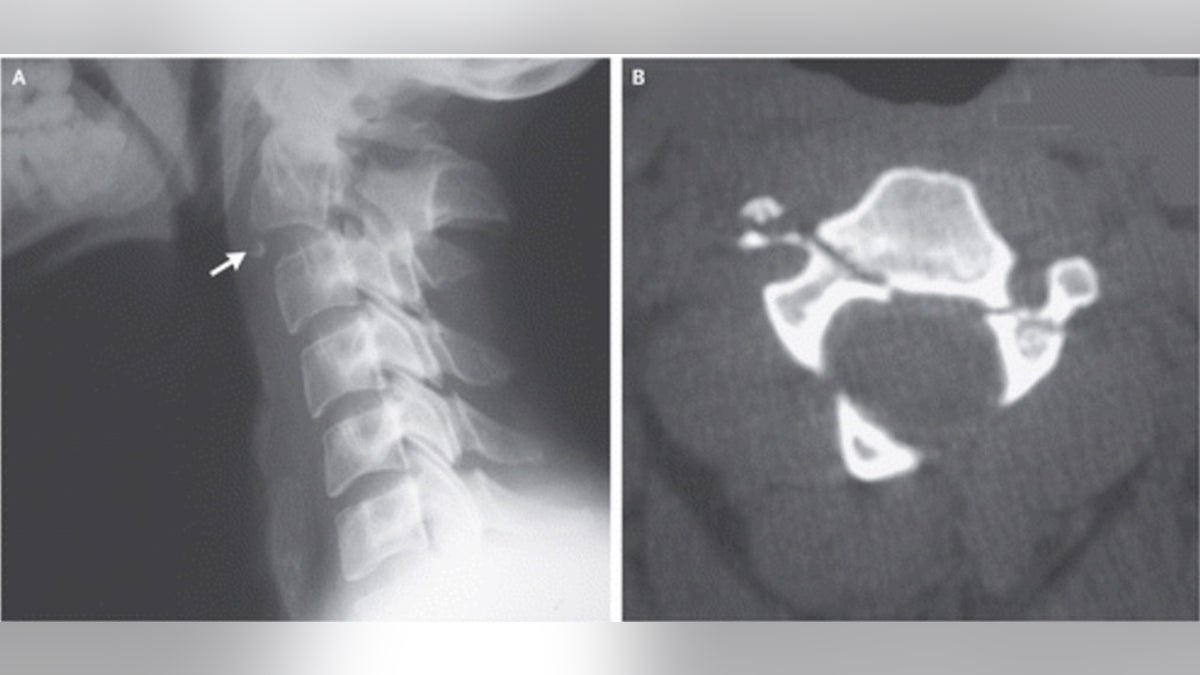
The image on the left is an X-ray of the man's neck. The arrow is pointing to a small chip of bone that broke off in the injury. The image on the right is a CT scan, looking up at the vertebra. There are two fractures, one on the right side and one on the left side. (The New England Journal of Medicine ©2017.)
A young man in Tunisia who was in a high-speed crash suffered a broken neck — in an injury doctors call a "hangman's fracture" — yet recovered with no lingering problems, according to a recent report of the man's case.
A "hangman's fracture" refers to a neck injury that occurs when a person's neck snaps backwards, as it would during a hanging.
And though the name refers to an act that's far less common today than it once was, the injury itself is not incredibly rare: Dr. Anis Khelifi, who was an orthopedic surgeon at the Kassab Orthopedic Institute in Tunisia when he treated the patient, said he's seen this type of fracture twice.
The fracture occurs in the second cervical vertebra (in other words, the second-from-the-top vertebra of the spine), and is the second most common type of fracture for this vertebra, Khelifi told Live Science.
After the car crash, which took place in August 2012, the 25-year-old man came to the emergency room in severe pain, according to the brief report of the man's case, which was published today (May 3) in The New England Journal of Medicine .
The doctors examined the man and concluded that the crash had not damaged his spinal cord, according to the report. Spinal cord damage can lead to paralysis , and if the damage is extreme, it can cause death, Khelifi said.
To check for spinal cord damage , the doctors did a neurological exam, including checking to see if the man had any weakness in his arms or legs and if he could sense a light touch or pinprick on his skin, according to the report.
Although the man hadn't damaged his spinal cord, the doctors concluded that his injury was "unstable," Khelifi said. In other words, there was a chance the injury would get worse and cause more damage.
The man underwent surgery to stabilize the injury, and he fully recovered. Four years after the injury and surgery, he was pain-free and had no neurological problems, according to the report.
Originally published on Live Science .



















